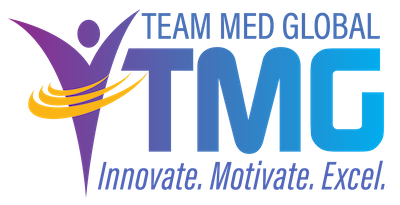 In the healthcare sector, where precision and clarity are paramount, Medical Services Professionals (MSPs) have both influence and responsibility. One critical skill in the MSP toolbox is effective presentation skills. These skills are not just about public speaking; they encompass the ability to communicate complex information clearly, engage with stakeholders, and drive meaningful changes within healthcare organizations. That’s why presentation skills are a component of both the Executive MSP and the Executive Provider Enrollment Professional Competency Models.
In the healthcare sector, where precision and clarity are paramount, Medical Services Professionals (MSPs) have both influence and responsibility. One critical skill in the MSP toolbox is effective presentation skills. These skills are not just about public speaking; they encompass the ability to communicate complex information clearly, engage with stakeholders, and drive meaningful changes within healthcare organizations. That’s why presentation skills are a component of both the Executive MSP and the Executive Provider Enrollment Professional Competency Models.
Why Presentation Skills are Essential for MSPs
As MSPs, we frequently find ourselves at the intersection of numerous departments and committees, where we must present information, reports, and recommendations that can influence decision-making processes. Whether it’s presenting credentialing policies to a board, explaining new regulatory requirements to the medical staff, or leading training sessions on best practices, the ability to deliver clear, concise, and compelling presentations is indispensable. Effective presentation skills help us advocate for best practices, ensure compliance with evolving healthcare regulations, and foster a culture of continuous improvement and patient safety.
Key Presentation Skills for MSPs
Clarity and Conciseness: With the often complex and technical nature of MSP work, being able to distill information into digestible, understandable pieces is crucial. This means avoiding jargon when addressing non-specialists and focusing on the key points that matter to the audience.
Engagement: Engaging the audience is about more than just keeping their attention; it’s about making the information relevant to them. This could involve connecting the dots between regulatory compliance and patient outcomes or demonstrating the real-world implications of efficient credentialing processes.
Visual Aids: In the world of credentialing, provider enrollment, and licensure, data and documentation are king. Effective MSPs know how to leverage visual aids like charts, graphs, and slides to illustrate points, highlight trends, and support their arguments without overwhelming their audience.
Adaptability: Being able to read the room and adapt your presentation style to the audience’s response is a subtle but powerful skill. This might mean changing the course of your presentation based on real-time feedback or addressing questions and concerns in a manner that adds value to the discussion.
Confidence: Confidence in presenting comes from thorough knowledge of the subject matter and the conviction that what you’re communicating is of vital importance to your audience. This confidence can make the difference in persuading stakeholders to adopt new policies or practices.
Developing and Refining Presentation Skills
Developing presentation skills involves a combination of education, practice, and feedback:
Structured Learning and Certification: Enroll in courses focusing on communication and presentation skills within a healthcare context. Look for certifications that not only teach public speaking but also emphasize storytelling and audience engagement techniques tailored for the healthcare industry.
Mentorship and Peer Learning: Seek mentorship from seasoned MSPs or healthcare professionals known for their exemplary presentation skills. Engaging in peer learning sessions where you can present to, and receive feedback from, fellow MSPs can foster a supportive environment for growth.
Simulated Presentations: Utilize simulated presentation environments, which could include setting up mock board meetings or committee settings where you can practice presenting complex medical staff policies or changes in regulations. This practice can help in refining your ability to present information under conditions that mimic real-life scenarios.
Body Language and Voice Modulation Workshops: Attend workshops that focus on non-verbal communication, body language, and voice modulation. These skills can significantly enhance the effectiveness of your presentations by ensuring that your message is not only heard but also felt by the audience.
Feedback Mechanisms: Establish structured feedback mechanisms post-presentation. This could involve anonymous surveys or a structured debrief session with your peers or mentors to discuss what worked well and areas for improvement.
Continuous Practice: Engage in continuous practice by seeking out opportunities to present, whether within your organization or at external conferences and workshops. Consistent practice is key to becoming comfortable with various aspects of presenting, from managing nerves to handling unexpected questions.
For MSPs, mastering presentation skills is not just about personal or professional development; it’s about enhancing the quality of healthcare by ensuring that vital information is communicated effectively. Because we play a pivotal role in the functioning of healthcare facilities, our ability to present information effectively becomes ever more critical in the pursuit of excellence in patient safety.
